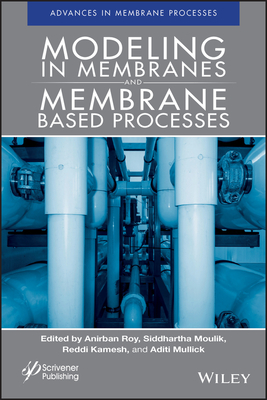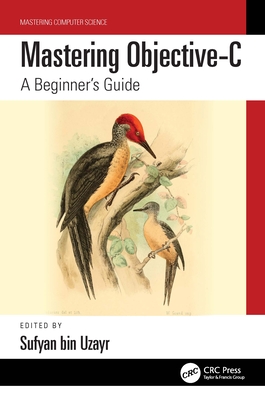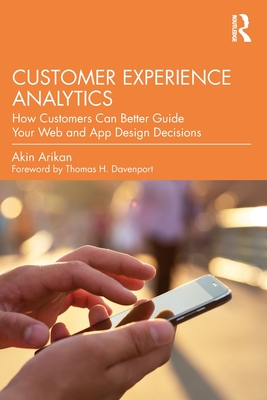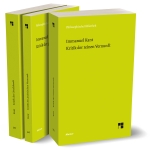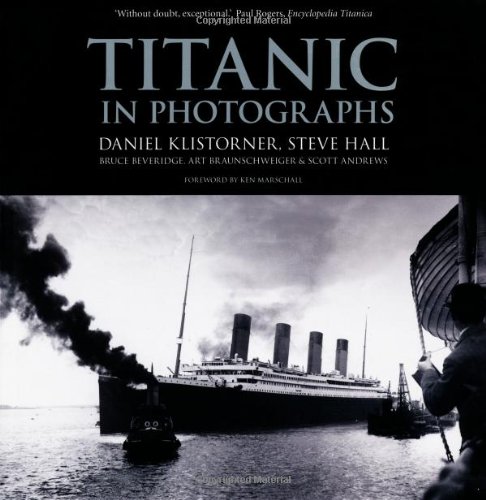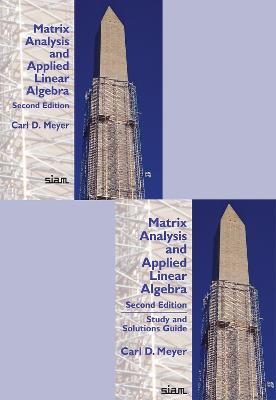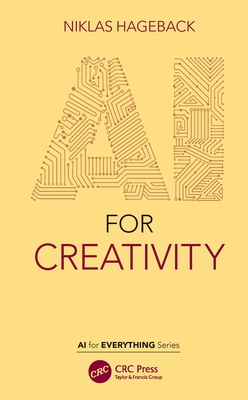图书简介
The book Modeling in Membranes and Membrane-Based Processes is based on the idea of developing a reference which will cover most relevant and "state-of-the-art" approaches in membrane modeling. This book explores almost every major aspect of modeling and the techniques applied in membrane separation studies and applications. This includes first principle-based models, thermodynamics models, computational fluid dynamics simulations, molecular dynamics simulations, and artificial intelligence-based modeling for membrane separation processes. These models have been discussed in light of various applications ranging from desalination to gas separation. In addition, this breakthrough new volume covers the fundamentals of polymer membrane pore formation mechanisms, covering not only a wide range of modeling techniques, but also has various facets of membrane-based applications. Thus, this book can be an excellent source for a holistic perspective on membranes in general, as well as a comprehensive and valuable reference work. Whether a veteran engineer in the field or lab or a student in chemical or process engineering, this latest volume in the "Advances in Membrane Processes" is a must-have, along with the first book in the series, Membrane Processes, also available from Wiley-Scrivener.
Acknowledgement xiii 1 Introduction: Modeling and Simulation for Membrane Processes 1 Anirban Roy, Aditi Mullick, Anupam Mukherjee and Siddhartha Moulik References 6 2 Thermodynamics of Casting Solution in Membrane Synthesis 9 Shubham Lanjewar, Anupam Mukherjee, Lubna Rehman, Amira Abdelrasoul and Anirban Roy 2.1 Introduction 10 2.2 Liquid Mixture Theories 11 2.2.1 Theories of Lattices 11 2.2.1.1 The Flory-Huggins Theory 11 2.2.1.2 The Equation of State Theory 12 2.2.1.3 The Gas-Lattice Theory 13 2.2.2 Non-Lattice Theories 13 2.2.2.1 The Strong Interaction Model 13 2.2.2.2 The Heat of Mixing Approach 13 2.2.2.3 The Solubility Parameter Approach 14 2.2.3 The Flory-Huggins Model 15 2.3 Solubility Parameter and Its Application 18 2.3.1 Scatchard-Hildebrand Theory 18 2.3.1.1 The Regular Solution Model 18 2.3.1.2 Application of Hildebrand Equation to Regular Solutions 19 2.3.2 Solubility Scales 20 2.3.3 Role of Molecular Interactions 21 2.3.3.1 Types of Intermolecular Forces 21 2.3.4 Intermolecular Forces: Effect on Solubility 23 2.3.5 Interrelation Between Heat of Vaporization and Solubility Parameter 24 2.3.6 Measuring Units of Solubility Parameter 25 2.4 Dilute Solution Viscometry 26 2.4.1 Types of Viscosities 27 2.4.2 Viscosity Determination and Analysis 28 2.5 Ternary Composition Triangle 32 2.5.1 Typical Ternary Phase Diagram 33 2.5.2 Binodal Line 34 2.5.2.1 Non-Solvent/Solvent Interaction 36 2.5.2.2 Non-Solvent/Polymer Interaction 36 2.5.2.3 Solvent/Polymer Interaction 36 2.5.3 Spinodal Line 36 2.5.4 Critical Point 37 2.5.5 Thermodynamic Boundaries and Phase Diagram 38 2.6 Conclusion 40 2.7 Acknowledgment 40 List of Abbreviations and Symbols 40 Greek Symbols 42 References 42 3 Computational Fluid Dynamics (CFD) Modeling in Membrane-Based Desalination Technologies 47 Pelin Yazgan-Birgi, Mohamed I. Hassan Ali and Hassan A. Arafat 3.1 Desalination Technologies and Modeling Tools 48 3.1.1 Desalination Technologies 48 3.1.2 Tools in Desalination Processes Modeling 49 3.1.3 CFD Modeling Tool in Desalination Processes 55 3.2 General Principles of CFD Modeling in Desalination Processes 56 3.2.1 Reverse Osmosis (RO) Technology 61 3.2.2 Forward Osmosis (FO) Technology 65 3.2.3 Membrane Distillation (MD) Technology 68 3.2.4 Electrodialysis and Electrodialysis Reversal (ED/EDR) Technologies 73 3.3 Application of CFD Modeling in Desalination 77 3.3.1 Applications in Reverse Osmosis (RO) Technology 77 3.3.2 Applications in Forward Osmosis (FO) Technology 95 3.3.3 Applications in Membrane Distillation (MD) Technology 108 3.3.4 Applications in Electrodialysis and Electrodialysis Reversal (ED/EDR) Technologies 121 3.4 Commercial Software Used in Desalination Process Modeling 122 Conclusion 132 References 133 4 Role of Thermodynamics and Membrane Separations in Water-Energy Nexus 145 Anupam Mukherjee, Shubham Lanjewar, Ridhish Kumar, Arijit Chakraborty, Amira Abdelrasoul and Anirban Roy 4.1 Introduction: 1st and 2nd Laws of Thermodynamics 146 4.2 Thermodynamic Properties 148 4.2.1 Measured Properties 148 4.2.2 Fundamental Properties 149 4.2.3 Derived Properties 149 4.2.4 Gibbs Energy 149 4.2.5 1st and 2nd Law for Open Systems 152 4.3 Minimum Energy of Separation Calculation: A Thermodynamic Approach 153 4.3.1 Non-Idealities in Electrolyte Solutions 154 4.3.2 Solution Thermodynamics 154 4.3.2.1 Solvent 155 4.3.2.2 Solute 155 4.3.2.3 Electrolyte 156 4.3.3 Models for Evaluating Properties 157 4.3.3.1 Evaluation of Activity Coefficients Using Electrolyte Models 157 4.3.4 Generalized Least Work of Separation 159 4.3.4.1 Derivation 160 4.4 Desalination and Related Energetics 164 4.4.1 Evaporation Techniques 166 4.4.2 Membrane-Based New Technologies 167 4.5 Forward Osmosis for Water Treatment: Thermodynamic Modelling 173 4.5.1 Osmotic Processes 173 4.5.1.1 Osmosis 174 4.5.1.2 Draw Solutions 175 4.5.2 Concentration Polarization in Osmotic Process 177 4.5.2.1 External Concentration Polarization 177 4.5.2.2 Internal Concentration Polarization 178 4.5.3 Forward Osmosis Membranes 180 4.5.4 Modern Applications of Forward Osmosis 180 4.5.4.1 Wastewater Treatment and Water Purification 181 4.5.4.2 Concentrating Dilute Industrial Wastewater 181 4.5.4.3 Concentration of Landfill Leachate 181 4.5.4.4 Concentrating Sludge Liquids 182 4.5.4.5 Hydration Bags 182 4.5.4.6 Water Reuse in Space Missions 182 4.6 Pressure Retarded Osmosis for Power Generation: A Thermodynamic Analysis 183 4.6.1 What is Pressure Retarded Osmosis? 183 4.6.2 Pressure Retarded Osmosis for Power Generation 184 4.6.3 Mixing Thermodynamics 186 4.6.3.1 Gibbs Energy of Solutions 186 4.6.3.2 Gibbs Free Energy of Mixing 187 4.6.4 Thermodynamics of Pressure Retarded Osmosis 188 4.6.5 Role of Membranes in Pressure Retarded Osmosis 190 4.6.6 Future Prospects of Pressure Retarded Osmosis 191 4.7 Conclusion 192 4.8 Acknowledgment 192 Nomenclature 192 1. Roman Symbols 192 2. Greek Symbols 193 3. Subscripts 194 4. Superscripts 194 5. Acronyms 194 References 195 5 Modeling and Simulation for Membrane Gas Separation Processes 201 Samaneh Bandehali, Hamidreza Sanaeepur, Abtin Ebadi Amooghin and Abdolreza Moghadassi Abbreviations 201 Nomenclatures 202 Subscripts 203 5.1 Introduction 203 5.2 Industrial Applications of Membrane Gas Separation 205 5.2.1 Air Separation or Production of Oxygen and Nitrogen 205 5.2.2 Hydrogen Recovery 206 5.2.3 Carbon Dioxide Removal from Natural Gas and Syn Gas Purification 210 5.3 Modeling in Membrane Gas Separation Processes 210 5.3.1 Mathematical Modeling for Membrane Separation of a Gas Mixture 210 5.3.2 Modeling in Acid Gas Separation 218 5.4 Process Simulation 221 5.4.1 Gas Treatment Modeling in Aspen HYSYS 222 5.5 Modeling of Gas Separation by Hollow-Fiber Membranes 225 5.6 CFD Simulation 227 5.6.1 Hollow Fiber Membrane Contactors (HFMCs) 227 5.7 Conclusions 228 References 229 6 Gas Transport through Mixed Matrix Membranes (MMMs): Fundamentals and Modeling 237 Rizwan Nasir, Hafiz Abdul Mannan, Danial Qadir, Hilmi Mukhtar, Dzeti Farhah Mohshim and Aymn Abdulrahman 6.1 History of Membrane Technology 237 6.2 Separation Mechanisms for Gases through Membranes 238 6.3 Overview of Mixed Matrix Membranes 242 6.3.1 Material and Synthesis of Mixed Matrix Membrane 242 6.3.2 Performance Analysis of Mixed Matrix Membranes 242 6.4 MMMs Performance Prediction Models 243 6.4.1 New Approaches for Performance Prediction of MMMs 246 6.5 Future Trends and Conclusions 246 6.6 Acknowledgment 253 References 253 7 Application of Molecular Dynamics Simulation to Study the Transport Properties of Carbon Nanotubes-Based Membranes 257 Maryam Ahmadzadeh Tofighy and Toraj Mohammadi 7.1 Introduction 258 7.2 Carbon Nanotubes (CNTs) 259 7.3 CNTs Membranes 263 7.4 MD Simulations of CNTs and CNTs Membranes 265 7.5 Conclusions 271 References 272 8 Modeling of Sorption Behaviour of Ethylene Glycol-Water Mixture Using Flory-Huggins Theory 277 Haresh K Dave and Kaushik Nath 8.1 Introduction 278 8.2 Materials and Method 281 8.2.1 Chemicals 281 8.2.2 Preparation and Cross-Linking of Membrane 281 8.2.3 Determination of Membrane Density 281 8.2.4 Sorption of Pure Ethylene Glycol and Water in the Membrane 282 8.2.5 Sorption of Binary Solution in the Membrane 282 8.2.6 Model for Pure Solvent in PVA/PES Membrane Using F-H Equation 283 8.2.7 Model for Binary EG-Water Sorption Using F-H Equation 285 8.3 Results and Discussion 289 8.3.1 Sorption in the PVA-PES Membrane 289 8.3.2 Determination of F-H Parameters Between Water and Ethylene Glycol (Xw EG) 290 8.3.3 Determination of F-H Parameters for Solvent and Membrane ( wm and EGm) 292 8.3.4 Modeling of Sorption Behaviour Using F-H Parameters 293 8.4 Conclusions 296 Nomenclature 297 Greek Letters 298 Acknowledgement 298 References 298 9 Artificial Intelligence Model for Forecasting of Membrane Fouling in Wastewater Treatment by Membrane Technology 301 Khac-Uan Do and Felix Schmitt 9.1 Introduction 302 9.1.1 Membrane Filtration in Wastewater Treatment 302 9.1.2 Membrane Fouling in Membrane Bioreactors and its Control 302 9.1.3 Models for Membrane Fouling Control 304 9.1.4 Objectives of the Study 305 9.2 Materials and Methods 305 9.2.1 AO-MBR System 305 9.2.2 The AI Modeling in this Study 305 9.2.3 Analysis Methods 307 9.3 Results and Discussion 308 9.3.1 Membrane Fouling Prediction Based on AI Model 308 9.3.2 Discussion on Using AI Model to Predict Membrane Fouling 316 9.4 Conclusion 320 Acknowledgements 321 References 321 10 Membrane Technology: Transport Models and Application in Desalination Process 327 Lubna Muzamil Rehman, Anupam Mukherjee, Zhiping Lai and Anirban Roy 10.1 Introduction 328 10.2 Historical Background 331 10.3 Theoretical Background and Transport Models 335 10.3.1 Classical Solution Diffusion Model 336 10.3.2 Extended Solution-Diffusion Model 339 10.3.3 Modified Solution-Diffusion-Convection Model 341 10.3.4 Pore Flow Model (PFM) 342 10.3.5 Electrolyte Transport and Electrokinetic Models 344 10.3.6 Kedem-Katchalsky Model - An Irreversible Thermodynamics Model 346 10.3.7 Spiegler-Kedem Model 346 10.3.8 Mixed-Matrix Membrane Models 347 10.3.9 Thin Film Composite Membrane Transport Models 348 10.3.10 Membrane Distillation 349 10.4 Limitations of Current Membrane Technology 351 10.4.1 External Concentration Polarisation 351 10.4.2 Internal Concentration Polarisation 352 10.4.3 External Concentration Polarisation Due to Membrane Biofouling 354 10.5 Recent Advances of Membrane Technology in RO, FO, and PRO 355 10.5.1 Hybrids 358 10.5.2 Other Membrane Desalination Technologies 359 10.5.2.1 Membrane Distillation 359 10.5.2.2 Reverse Electrodialysis (RED) 360 10.6 Techno-Economical Analysis 360 10.7 Conclusion 362 List of Abbreviations and Symbols 363 Greek Symbols 365 Suffix 366 References 366 Index 375
Trade Policy 买家须知
- 关于产品:
- ● 正版保障:本网站隶属于中国国际图书贸易集团公司,确保所有图书都是100%正版。
- ● 环保纸张:进口图书大多使用的都是环保轻型张,颜色偏黄,重量比较轻。
- ● 毛边版:即书翻页的地方,故意做成了参差不齐的样子,一般为精装版,更具收藏价值。
关于退换货:- 由于预订产品的特殊性,采购订单正式发订后,买方不得无故取消全部或部分产品的订购。
- 由于进口图书的特殊性,发生以下情况的,请直接拒收货物,由快递返回:
- ● 外包装破损/发错货/少发货/图书外观破损/图书配件不全(例如:光盘等)
并请在工作日通过电话400-008-1110联系我们。
- 签收后,如发生以下情况,请在签收后的5个工作日内联系客服办理退换货:
- ● 缺页/错页/错印/脱线
关于发货时间:- 一般情况下:
- ●【现货】 下单后48小时内由北京(库房)发出快递。
- ●【预订】【预售】下单后国外发货,到货时间预计5-8周左右,店铺默认中通快递,如需顺丰快递邮费到付。
- ● 需要开具发票的客户,发货时间可能在上述基础上再延后1-2个工作日(紧急发票需求,请联系010-68433105/3213);
- ● 如遇其他特殊原因,对发货时间有影响的,我们会第一时间在网站公告,敬请留意。
关于到货时间:- 由于进口图书入境入库后,都是委托第三方快递发货,所以我们只能保证在规定时间内发出,但无法为您保证确切的到货时间。
- ● 主要城市一般2-4天
- ● 偏远地区一般4-7天
关于接听咨询电话的时间:- 010-68433105/3213正常接听咨询电话的时间为:周一至周五上午8:30~下午5:00,周六、日及法定节假日休息,将无法接听来电,敬请谅解。
- 其它时间您也可以通过邮件联系我们:customer@readgo.cn,工作日会优先处理。
关于快递:- ● 已付款订单:主要由中通、宅急送负责派送,订单进度查询请拨打010-68433105/3213。
本书暂无推荐
本书暂无推荐
